Snapping Turtle Rescue
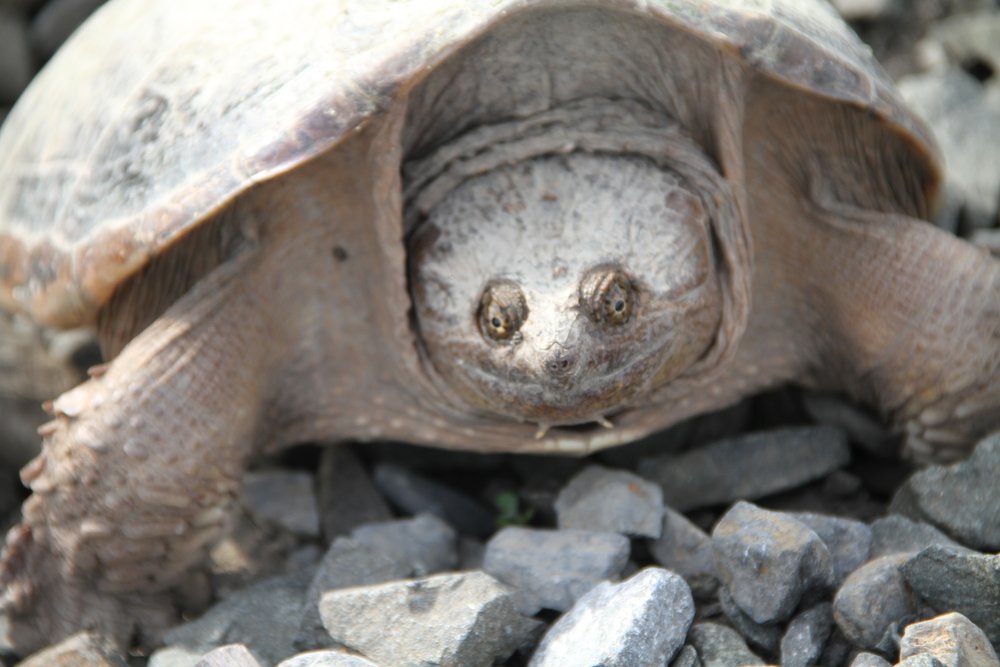

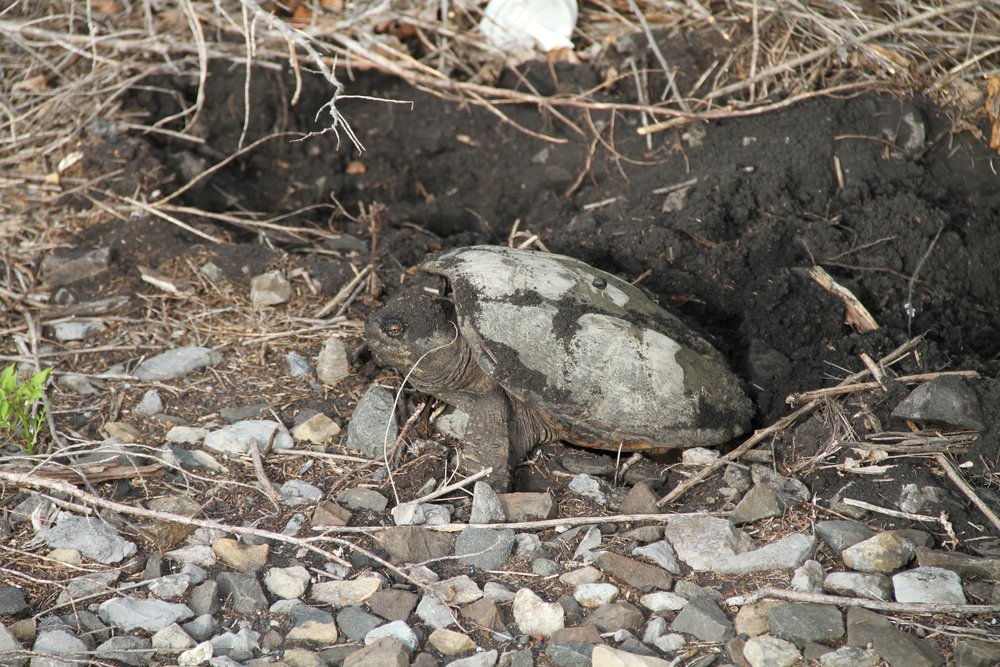
But Christina and I—searching for early morning birds—had no net with us there by the train tracks.
Christina suggested picking it up by its tail. That is the most frequent method of snapper removal, “but hold it away from your legs,” one friend warned.
“I’ve heard that isn’t good for the turtle,” I offered, while also worrying that the long neck of the turtle would swing around and snap her.
“Getting killed isn’t much better,” she pointed out, too wise for a 21-year-old.
“I’ve heard you can get them to latch onto a stick and move them that way.” We offered a stick to the turtle who seemed dumbstruck with our idea. She didn’t snap.
We then did what all turtle rescuers do: we stared at the turtle. We took photographs.
“Isn’t it great to photograph something that isn’t moving?” Christina joked. We spend a lot of time together trying to find birds, then snap fleeting photos. This was a treat. We were able to analyze the turtle’s steady yellow eyes that held a bit of contempt for the world and for us in particular. There were little barbells on her chin, like fangs, and all of her skin was droopy. The claws on the front feet impressed me. Unlike other turtles that shrink into their shells when frightened, the snapper can’t retract its enormous head and legs. It remains vulnerable to the world. Or, thought of another way, ready to attack the world.

We both found flat boards. From one side, Christina pried under the turtle and I did the same on the other side. Balancing, we lifted in unison while the turtle let off a musky pee. We stepped the turtle down the gravel embankment and into the shrubs lining the North Tivoli Bay. For the moment, the turtle was safe.
Haskell-Baker Wetlands
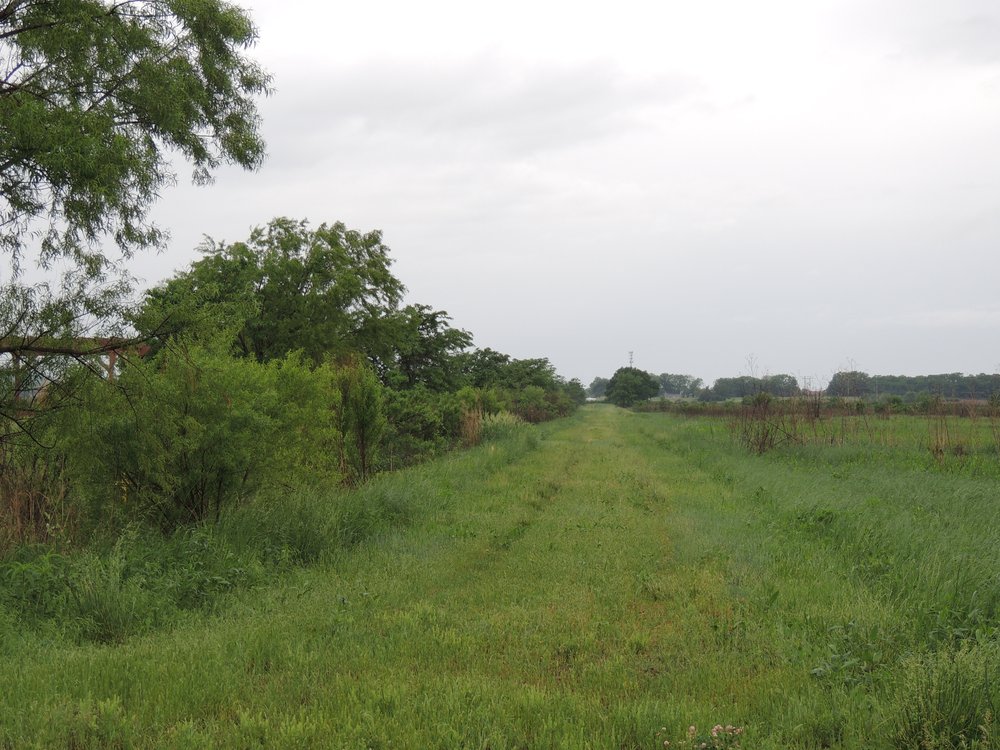 The Haskell-Baker wetlands in Lawrence Kansas are paradise. Most marshlands are paradise because they contain enchanting and secretive birds, like rails and bitterns. But there's something particularly magic about this almost 600 acres of land, located just off of 31st street in the southern part of this college town in prairie country.
The Haskell-Baker wetlands in Lawrence Kansas are paradise. Most marshlands are paradise because they contain enchanting and secretive birds, like rails and bitterns. But there's something particularly magic about this almost 600 acres of land, located just off of 31st street in the southern part of this college town in prairie country.
I was in Lawrence for the ASLE conference (Association for LIterature and the Environment). I'm not a conference person--but if ever there was a conference for me, this is it. Friday afternoon is devoted to fieldtrips, one of which is to kayak down the Kansas River. And, a ten-minute drive from my extraordinarily bleak dorm is the Baker wetlands.
 The Haskell-Baker wetlands in Lawrence Kansas are paradise. Most marshlands are paradise because they contain enchanting and secretive birds, like rails and bitterns. But there's something particularly magic about this almost 600 acres of land, located just off of 31st street in the southern part of this college town in prairie country.
The Haskell-Baker wetlands in Lawrence Kansas are paradise. Most marshlands are paradise because they contain enchanting and secretive birds, like rails and bitterns. But there's something particularly magic about this almost 600 acres of land, located just off of 31st street in the southern part of this college town in prairie country.
I was in Lawrence for the ASLE conference (Association for LIterature and the Environment). I'm not a conference person--but if ever there was a conference for me, this is it. Friday afternoon is devoted to fieldtrips, one of which is to kayak down the Kansas River. And, a ten-minute drive from my extraordinarily bleak dorm room, sits the Haskell-Baker wetlands (also known as the Wakarus Wetlands).
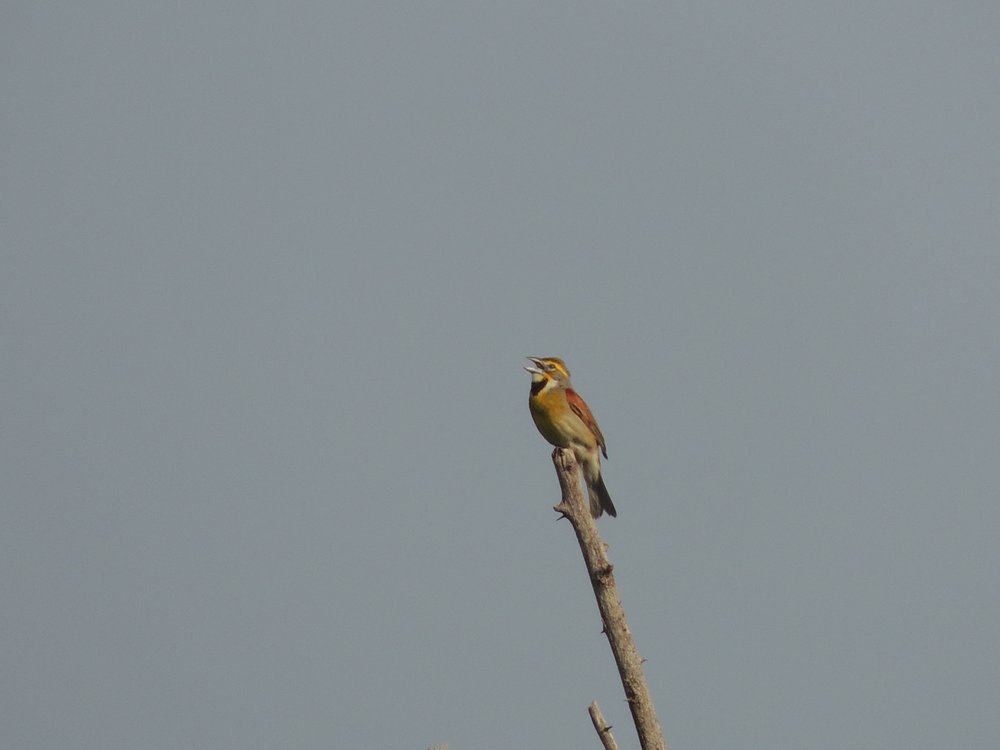 DickcisselAt 6 every morning, I shared the marshlands with the clack of rails and the witchita witchit witchita calls of common yellowthroats. I'm enchanted by the blues: of the Indigo Bunting so vivid against the skyline, but also of little blue herons, poking through the grasses. It's exciting to see such vibrancy in Tanagers and Orchard Orioles, and then one lone Yellow-crowned Night Heron. As I walk down the flat, green path, bordered by wet areas choked with reeds and cattails, there’s a call that is new to me. I listen to the chirr of the bird with a black throat that’s just bigger than a sparrow. Soon I identify it: Dickcissel (not one of the best bird names out there). It’s a common, vocal bird in the prairies, and to me, it’s a treat. I discover a blind, which allows me quiet views onto the marsh. Every morning of the conference, I walk with the sure happiness of someone who knows she will see something special.
DickcisselAt 6 every morning, I shared the marshlands with the clack of rails and the witchita witchit witchita calls of common yellowthroats. I'm enchanted by the blues: of the Indigo Bunting so vivid against the skyline, but also of little blue herons, poking through the grasses. It's exciting to see such vibrancy in Tanagers and Orchard Orioles, and then one lone Yellow-crowned Night Heron. As I walk down the flat, green path, bordered by wet areas choked with reeds and cattails, there’s a call that is new to me. I listen to the chirr of the bird with a black throat that’s just bigger than a sparrow. Soon I identify it: Dickcissel (not one of the best bird names out there). It’s a common, vocal bird in the prairies, and to me, it’s a treat. I discover a blind, which allows me quiet views onto the marsh. Every morning of the conference, I walk with the sure happiness of someone who knows she will see something special.
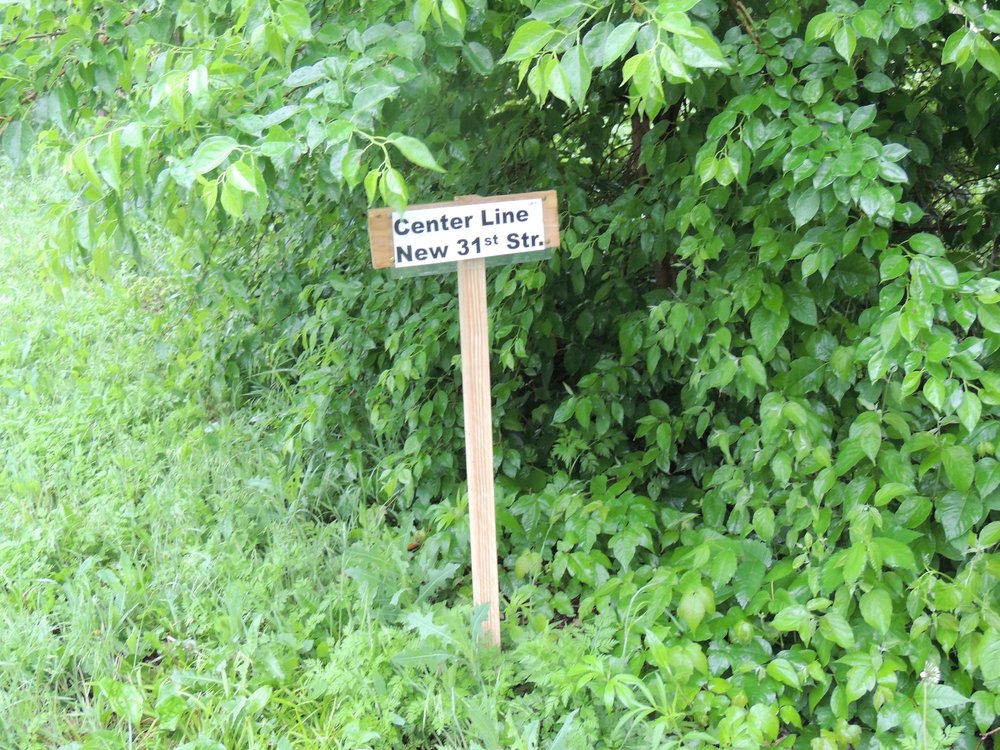 Noooooo!One morning there is something new on the trail. Not coyote scat or a snake or a cottontail vanishing into the grass. There's a sign. The sign tells me that 31st street is going to cut into this marsh, railroad through this lush place so alive with breeding birds. I stop and stare at the sign and I feel something itch behind my eyes. How can a road cut into wetlands--I naively believe they are protected. The thought makes me dizzy. If this land rested near me I'd spend umpteen hours fighting the proposed road. Turns out locals have been fighting this construction for twenty years--with intelligence and persistence. But it looks like the fight has ended; the road is going to be built.
Noooooo!One morning there is something new on the trail. Not coyote scat or a snake or a cottontail vanishing into the grass. There's a sign. The sign tells me that 31st street is going to cut into this marsh, railroad through this lush place so alive with breeding birds. I stop and stare at the sign and I feel something itch behind my eyes. How can a road cut into wetlands--I naively believe they are protected. The thought makes me dizzy. If this land rested near me I'd spend umpteen hours fighting the proposed road. Turns out locals have been fighting this construction for twenty years--with intelligence and persistence. But it looks like the fight has ended; the road is going to be built.
I have just gotten to know this place, and yet I’m still a bit heartbroken. Every chunk taken out of wild and precious places hurts.
 Indigo BuntingBut the truth is this place is not really wild. It's a piece of land, I learn, with a long history. This marsh rests in the Wakarusa Valley and was originally 18,000 acres. These remaining 600 acres are adjacent to the Haskell Indian Nations University. In 1884, when the school was founded, it belonged to them. Giving the Indians a chunk of swampland was not a generous gesture--it was useless land. But they drained the swamp and made it into agricultural land. In the 30s, it fell into disuse and was given back to the city. (For a fuller history, read this clear blog post from Haskell graduate, Jessica Lackey). That the city now wants to build a highway, supported by $192 million from the governor, through what remains of the wetlands seems absurd. There are lots of places to build roads. Why here? Perhaps because we still see wetlands as throwaway land. Kansas DOT will fill, then pave over all of this rich bird habitat.
Indigo BuntingBut the truth is this place is not really wild. It's a piece of land, I learn, with a long history. This marsh rests in the Wakarusa Valley and was originally 18,000 acres. These remaining 600 acres are adjacent to the Haskell Indian Nations University. In 1884, when the school was founded, it belonged to them. Giving the Indians a chunk of swampland was not a generous gesture--it was useless land. But they drained the swamp and made it into agricultural land. In the 30s, it fell into disuse and was given back to the city. (For a fuller history, read this clear blog post from Haskell graduate, Jessica Lackey). That the city now wants to build a highway, supported by $192 million from the governor, through what remains of the wetlands seems absurd. There are lots of places to build roads. Why here? Perhaps because we still see wetlands as throwaway land. Kansas DOT will fill, then pave over all of this rich bird habitat.
ASLE has, to my delight, given money to the efforts to preserve these wetlands. Jessica Lackey, a member of the Cherokee Nation, spoke with tremendous clarity about the work she has done as she organizes others to think about environmental issues with a Native perspective. She's done an analysis of planting prairie grasses on the campus (rather than the fertilized lawn that needs constant mowing). Geographer Mike Caron offered a clear history of the site and the lives of the Native children brought to the school to be educated: the marshlands were the place they turned to in order to continue their rituals, and as solace. Others offered a sense of the ongoing fight--and they seem a bit worn down, as if this latest victory for the Kansas Department of Transportation might be final. They have all engaged in a long fight, which for someone young like Jessica is almost her entire life.
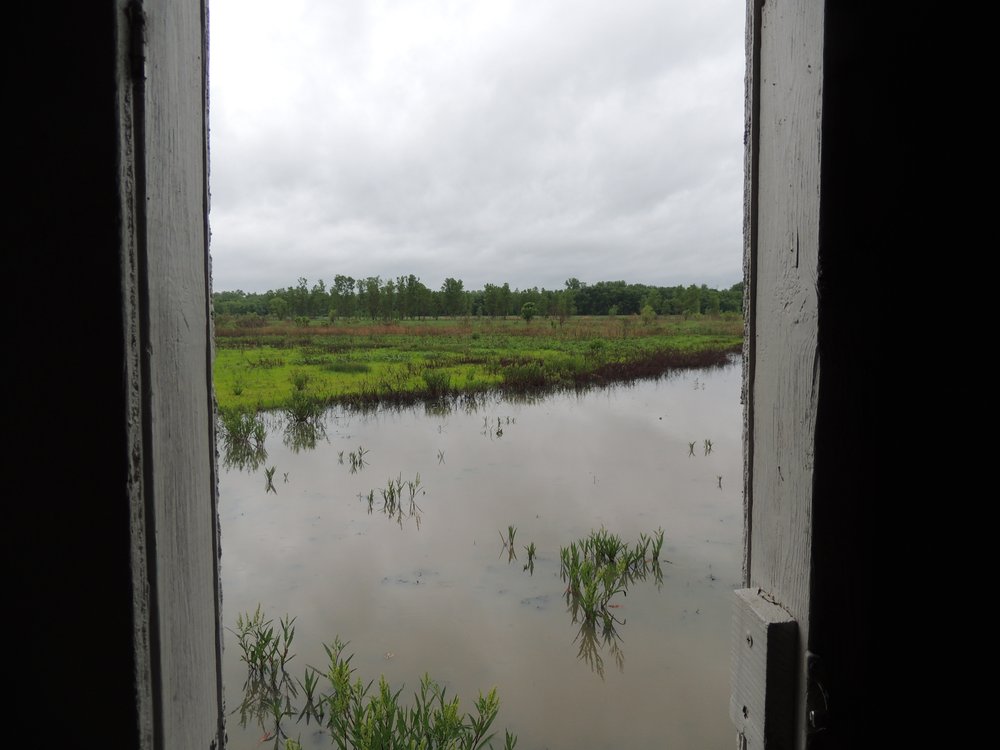 View from a blind onto the marshThis all reminds me of the long fight of the Hudson River Valley: Storm King. For 28 years environmentalists, fishermen, and those who love the Valley fought against GE building a pump storage station on the summit of Storm King Mountain. One of the great fighters in that case and for other Hudson River issues was Pete Seeger. What would he say? Keep on.
View from a blind onto the marshThis all reminds me of the long fight of the Hudson River Valley: Storm King. For 28 years environmentalists, fishermen, and those who love the Valley fought against GE building a pump storage station on the summit of Storm King Mountain. One of the great fighters in that case and for other Hudson River issues was Pete Seeger. What would he say? Keep on.
On my last day in Lawrence I make a final pilgrimage to this place I find so magical and that I’ll probably never see again. There's a father and his three and a half year old daughter walking the causeway. Olivia's got a pink barrette in her hair. She's gregarious, asking me what I have seen and we discuss footprints in the mud. She starts to head out with me, to see more things and her father stops her, "we're going home now." We hesitate for a moment, and he asks where I'm from; New York. This is a great place to raise a kid, I note, and he nods. "Are we in Kansas?" Olivia asks. I almost laugh. We are. And it's beautiful.
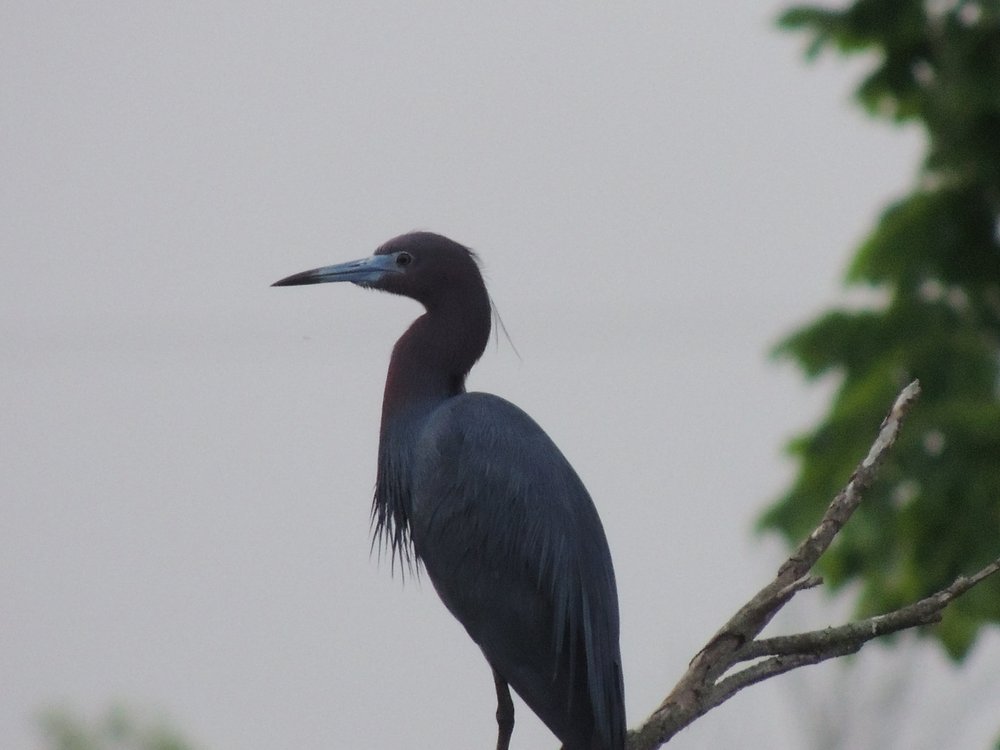 Little Blue Heron I walk further out into the swamp and three young men, jogging, pass me. "It's snake city down there," one says cheerfully. I see a water snake stretched in the path and look for brothers and sisters. I turn to leave, saying goodbye to this place that might be paved over as early as this summer. I wish—knowing that wishing is not enough--that the marshlands continue on with the memories of those Native children; as a place for Olivia to grow up; as a perfect place for those boys to run; as the ideal environment for birders eager to see special birds. Keep on my Kansas friends. Keep on.
Little Blue Heron I walk further out into the swamp and three young men, jogging, pass me. "It's snake city down there," one says cheerfully. I see a water snake stretched in the path and look for brothers and sisters. I turn to leave, saying goodbye to this place that might be paved over as early as this summer. I wish—knowing that wishing is not enough--that the marshlands continue on with the memories of those Native children; as a place for Olivia to grow up; as a perfect place for those boys to run; as the ideal environment for birders eager to see special birds. Keep on my Kansas friends. Keep on.
Praying Mantis Spring
 This winter this blog has hibernated, as have I. Friends, colleagues, and people I meet in line at the grocery store, form a chorus: this winter was the worst; this winter was bad. This winter was a sag behind the eyes, a pull to exhaustion. We need some sun and warmth generated energy. As one friend posted to Facebook: spring, I’m done with the foreplay. We’re ready for growth, for change, rebirth.
This winter this blog has hibernated, as have I. Friends, colleagues, and people I meet in line at the grocery store, form a chorus: this winter was the worst; this winter was bad. This winter was a sag behind the eyes, a pull to exhaustion. We need some sun and warmth generated energy. As one friend posted to Facebook: spring, I’m done with the foreplay. We’re ready for growth, for change, rebirth.
 This winter this blog has hibernated, as have I. Friends, colleagues, and people I meet in line at the grocery store, form a chorus: this winter was the worst; this winter was bad. This winter was a sag behind the eyes, a pull to exhaustion. We need some sun and warmth generated energy. As one friend posted to Facebook: spring, I’m done with the foreplay. We’re ready for growth, for change, rebirth.
This winter this blog has hibernated, as have I. Friends, colleagues, and people I meet in line at the grocery store, form a chorus: this winter was the worst; this winter was bad. This winter was a sag behind the eyes, a pull to exhaustion. We need some sun and warmth generated energy. As one friend posted to Facebook: spring, I’m done with the foreplay. We’re ready for growth, for change, rebirth.

Friends immediately questioned the “my” of the praying mantis. So here’s the story. Last fall, Christina, one of my wonderful Bard students, found three mantis sacks (ootheca, the scientists call them and I like the word) in a field that was to be mowed. She gave them to me to keep in my refrigerator through the winter. Six weeks ago she texted it was time to take them out. I placed them in a brown back, sealed it and waited. About two weeks ago I started checking every morning for any stirring. And then on Wednesday evening I entered my living room  and I sensed life beyond the two cats who greeted me at the door. I opened one bag and there they were, barely the length of a fingernail. Mantis limbs at birth are as thin as sewing thread and the eyes a polka dot. But the parts are all there, the long limbs and bent forelimbs ready to fold into prayer. Christina brought over a friend and we marveled and exclaimed and took baby pictures before releasing the creatures into the night (before they ate each other).
and I sensed life beyond the two cats who greeted me at the door. I opened one bag and there they were, barely the length of a fingernail. Mantis limbs at birth are as thin as sewing thread and the eyes a polka dot. But the parts are all there, the long limbs and bent forelimbs ready to fold into prayer. Christina brought over a friend and we marveled and exclaimed and took baby pictures before releasing the creatures into the night (before they ate each other).
The next morning I examined the egg sack; more mantids were emerging into the world. By the end of the day the little insects were gone, eaten or fled or on their way toward praying mantis adulthood, to lay more sacks in the fall.
Now I am off to listen for more stirrings, more beginnings. I’ll be writing more soon.
Snow Goose

Thrilled by the show, I continued snowshoeing south, following the path that meanders near the edge of the South Tivoli Bay. The Bay is wide and shallow, often freezing up before the rest of the river. Snow covered the ground and the temperatures hovered near freezing. I could see that the Bay had a thin coat of ice, gleaming in the high noon sun. There are three underpasses that lead to the Hudson River and near those underpasses stood open water. There had to be ducks nearby.

Thrilled by the show, I continued snowshoeing south, following the path that meanders near the edge of the South Tivoli Bay. The Bay is wide and shallow, often freezing up before the rest of the river. Snow covered the ground and the temperatures hovered near freezing. I could see that the Bay had a thin coat of ice, gleaming in the high noon sun. There are three underpasses that lead to the Hudson River and near those underpasses stood open water. There had to be ducks nearby.
 Goose bedraggled; photo by Bard student Christina BaalI arrived at a jut of land affectionately referred to as Buttocks Island. I walked out through the crevice of the island and peered south. A flock of Ring-Billed Gulls stood on the thin sheet of ice. Soon, the heron joined them, standing tall next to its shorter compatriots. I spotted the eagle in a far tree on the end of Cruger Island, perched near a mature eagle, it’s white head visible without my binoculars. The immature eagle flew over, swooping low over the gulls. They all took to the air, while the heron stood, refusing to engage in another chase.
Goose bedraggled; photo by Bard student Christina BaalI arrived at a jut of land affectionately referred to as Buttocks Island. I walked out through the crevice of the island and peered south. A flock of Ring-Billed Gulls stood on the thin sheet of ice. Soon, the heron joined them, standing tall next to its shorter compatriots. I spotted the eagle in a far tree on the end of Cruger Island, perched near a mature eagle, it’s white head visible without my binoculars. The immature eagle flew over, swooping low over the gulls. They all took to the air, while the heron stood, refusing to engage in another chase.
I loitered for a while, scoping the Common Mergansers floating in the open water near the underpass. Beyond the underpass I could see the far shore of the river, the hamlet of Glasco and the Catskills, lumpy blue, in the background. It was a perfect blue-sky day, the sort of day that demands time outside.
I poked around the south side of Buttock’s Island, hoping without much hope, to see a Snow Goose there. Just after Hurricane Sandy swept through, the Goose arrived. It looked pretty bedraggled, white feathers all askew. When thousands of Snow Geese migrated through the valley this fall it did not pick up and join its cousins. I assumed it was too injured to fly. Despite this, the bird had made it through December, with frequent visits from Bard College students, eager to see a special bird. Through the fall I had grown fond of the bird, thought of it as my goose, and had resisted an urge to feed it.
The bird wasn’t there, of course. I refused to get sentimental. This was just nature taking her course. A fox or a coyote could have made it a good meal.
I continued on my way, taking the narrow path that rolls over hillocks and hugs the South Tivoli Bay. The views through the trees were long, out to patches of open water where Black Ducks floated. As I approached the mouth of the Sawkill, I heard the cackle of the Kingfisher that had been there all summer and fall. And then, to my amazement, there was my goose, idling in the open water! It shoved further out as I approached, full of admiration for its will to live.

